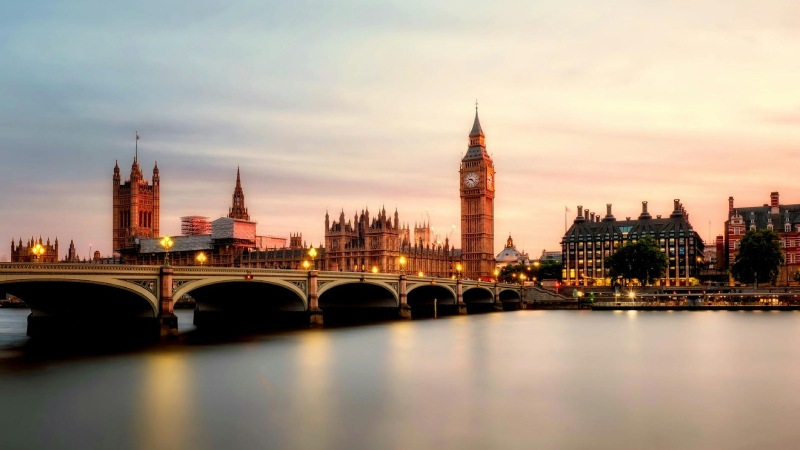
London isn’t just about world famous historical sights like Big Ben or Buckingham Palace; it also has iconic music scenes and places commemorating significant historical events. The capital of the United Kingdom can be explored in many ways—below are three travel itineraries you can use to plan your own trip to London.
Itinerary 1: Tour of Iconic Landmarks
If you want to see the most important sights in London, set off on a classic tour of the city’s most famous attractions. Be sure to include the following on your list:
- Big Ben – The world’s most famous clock tower and a symbol of London. Since 2012, its official name has been Elizabeth Tower, in honour of Queen Elizabeth II’s 60th year of reign.
- Palace of Westminster – A neo-Gothic palace listed as a UNESCO World Heritage Site and home to the Houses of Parliament. At its northern end stands the Big Ben. The parliament building is open to visitors, and tickets can be purchased on-site or online.
- Westminster Abbey – One of the most significant Anglican churches, that has been the site of British royal coronations and burials since 1066.
- Buckingham Palace – The official residence of the British monarch and one of London’s top attractions. The Changing of the Guard ceremony takes place here at 11:30 AM daily, drawing large crowds. During the summer, visitors can tour the State Rooms, though guided tours. Tours are available on select autumn and winter days as well.
- James’s Park – The oldest royal park in London, it lies between Buckingham Palace, Westminster Palace, and St. James’s Palace.
- Trafalgar Square – A famous square with a towering column honouring Admiral Horatio Nelson. It was laid out in 1826 on the site of former royal stables. The square is a traditional gathering place in London.
![]()
Itinerary 2: London Music Walking Tour
London is a paradise for music enthusiasts. If you are one of them you should definitely get on a tour discovering the city’s legendary music venues that have hosted some of the world’s greatest artists! Here are a few places to add to your list:
- Tin Pan Alley (Denmark Street) – The place where Elton John composed “Your Song” and Tom Jones recorded “It’s Not Unusual.”
- 3 Savile Row – The rooftop of this building was the site of The Beatles’ final concert.
- The Marquee Club – A legendary venue where bands like The Who, The Rolling Stones, Led Zeppelin, and Pink Floyd performed.
- Ronnie Scott’s Jazz Club – The venue where Jimi Hendrix gave his final performance.
- Trident Studios – Where Queen recorded their first three albums.
- Don’t forget to visit Abbey Road and Berwick Street to recreate scenes from the famous album covers of Abbey Road by The Beatles and What’s The Story Morning Glory by Oasis.
Itinerary 3: Following the Footsteps of Armed Conflicts
For history buffs, we recommend a tour of UK military history. Great Britain played a role in many of the world’s major conflicts, and London was a key place in the military power of the country. To uncover London’s wartime history, be sure to visit these sites:
- Royal Artillery Boer War Memorial – Unveiled in 1910, this monument commemorates the 1,083 Royal Artillery soldiers who died in the Second Boer War (1899–1902).
- Winston Churchill’s War Rooms – A museum in London featuring the historic underground complex that served as Britain’s command centre during World War II.
- The Cenotaph – A war memorial on Whitehall near Downing Street, unveiled in 1920 to honour those who died in World War I. In 1946, it was expanded to include those who died in World War II. Its name comes from Greek and means “empty tomb.”
- Monument to the Women of World War II – Located next to the Cenotaph, this memorial honours the contributions of women during World War II, including the 650,000 British women who joined the armed forces.
- Battle of Britain Monument – A sculpture on Victoria Embankment, unveiled in 2005, honouring those who fought in the 1940 Battle of Britain.
- Gurkha Memorial – The first monument in the UK dedicated to Nepalese soldiers, commemorating all Gurkha units that served in the British Army.
How to Plan a Tour of London?
To avoid getting lost in the British capital, consider joining a guided tour of London. A great starting point is one of the walking tours organised by Walkative! London walking tours with Walkative! offer several options—from classic tours of famous landmarks to WWII-focused tours or music venue tours. Walkative! tours come with an added benefit: you can choose between paid, private tours or so called free tours, a unique concept with no set price. To join them you simply reserve a spot online, join the tour, and at the end, you decide how much you want to pay for your guide’s expertise and effort! It is as easy as that!